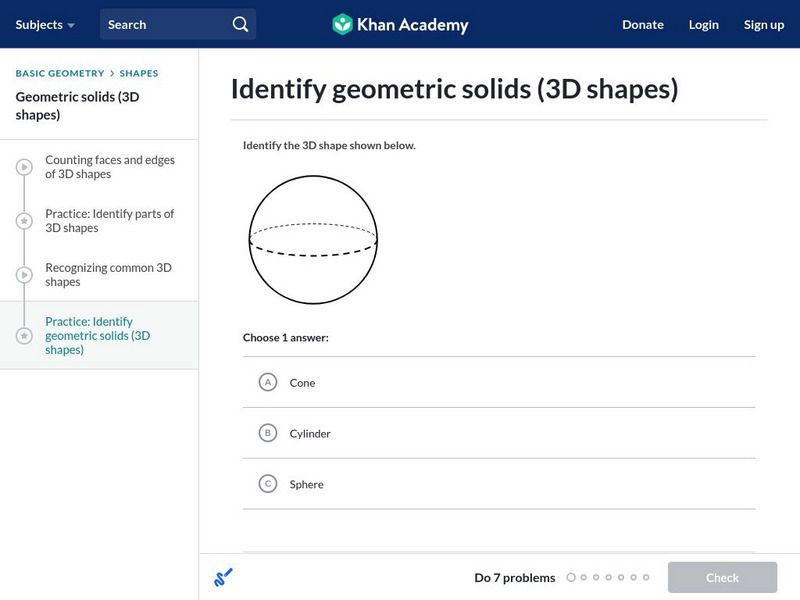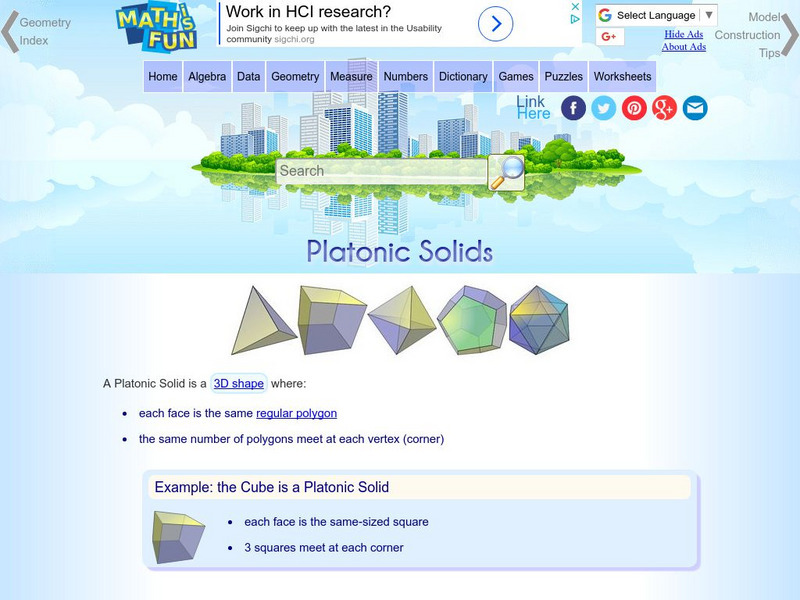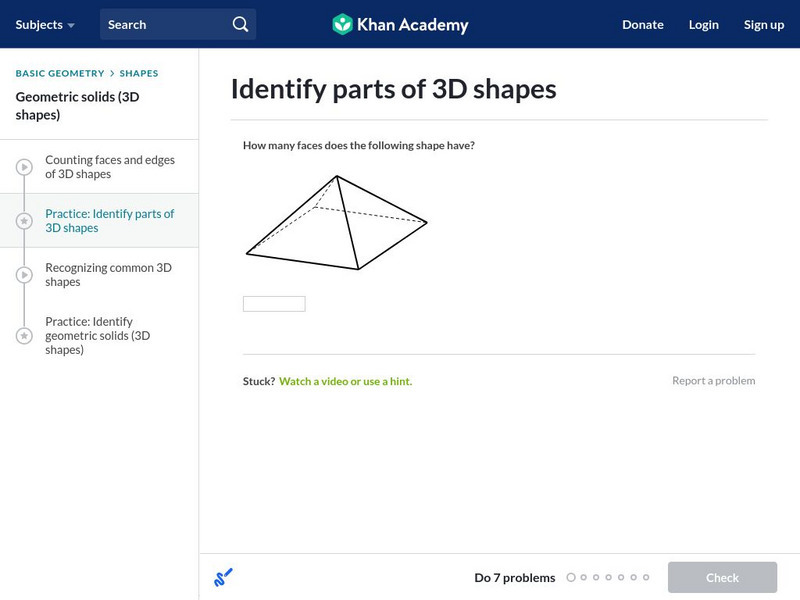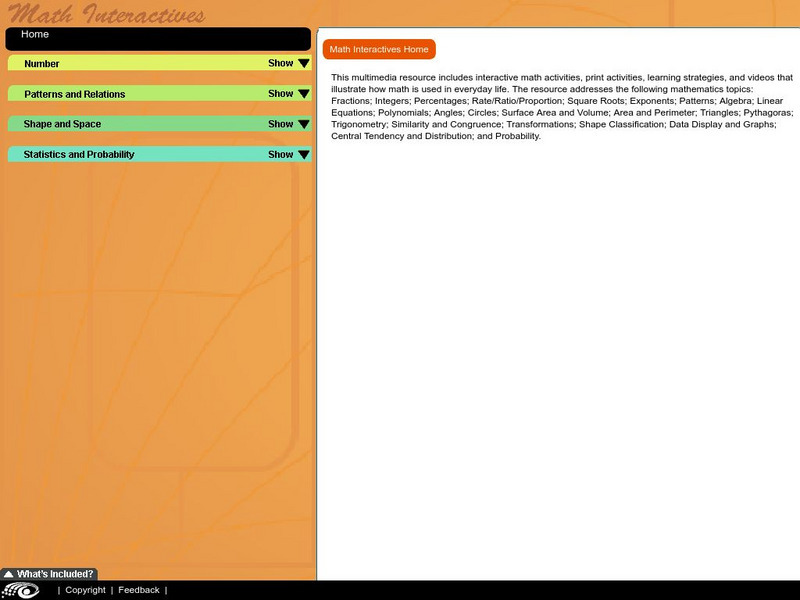Hi, what do you want to do?
Curated OER
Shapes are Everywhere
Second graders gain an understanding of geometric shapes and spatial reasoning. They learn the attributes of solid shapes in everyday activities. Students compare geometric shapes to everday objects, finding things that serve a purpose...
Curated OER
Polygons and Plane Figures
Young scholars choose a polygon to define and describe, and use Power Point and the Internet to present their polygon.
Curated OER
A World of Symmetry
Middle schoolers identify lines of symmetry. In this symmetry lesson, students create objects and identify their lines of symmetry. They answer questions about lines of symmetry. Middle schoolers cut shapes out of...
Illustrative Mathematics
Box of Clay
What happens to a volume when you scale the dimensions of a rectangular prism? In this problem, a box of clay is increased in each dimension, with the intent to see if learners can generalize the result. The addition of...
Curated OER
Symmetry with Manipulatives
First graders investigate symmetry in patterns by utilizing unifix cubes. In this pattern lesson, 1st graders practice creating patterns that are perfectly symmetrical no matter which way it's looked at. Students utilize...
Pennsylvania Department of Education
Volume of Regular and Irregular Objects
Fifth graders examine patterns and relate to equations to solve math problems. For this patterns lesson, 5th graders diagram, graph, use models and use tables to solve equations for real world problems.
Pennsylvania Department of Education
Volume of Compound Figures
Fifth graders use patterns, models and relationships to solve equations. In this equations instructional activity, 5th graders define vocabulary for equations and complete worksheets explaining variables and solving problems.
Curated OER
Getting Familiar with Fractals
Students use the Internet to answer lab questions about fractals, and then construct fractals using the initial stage and iteration rule. They complete tables and generate rules for the "nth" term and create their own fractals.
Curated OER
Mosaic Pavement Panel
Young scholars analyze Mosaic art and identify the tessellation process. In this Mosaic art lesson, students read information about Mosaic art and the tessellation process. Young scholars compare mosaics from various civilizations and...
Curated OER
Relationships and Functions
Fifth graders describe patterns as relations and functions. In this patterning lesson plan, 5th graders analyze and continue patterns. Students understand how patterns relate to relations and functions.
Math Is Fun
Math Is Fun: Making 3 D Solids
This tutorial features templates and instructions to make the following solids: tetrahedron, cube, octahedron, dodecahedron, and icosahedron.
History is Fun
Jan Brett: Geometric Solids Flashcards Pdf
Print out these colorfully illustrated PDF file pages to practice learning your basic three dimensional geometric solids. Fold them in half and one side shows the shape while the other side shows the shape with the correct name. Put them...
Khan Academy
Khan Academy: Identify Parts of 3 D Shapes
Identify the parts of 3D shapes in this assessment.
Annenberg Foundation
Annenberg Learner: Geometry 3 D Shapes
Learn about several three-dimensional geometric shapes and the terminology used to describe them. Learn how to calculate their surface area and volume, and explore their mathematical properties.
Government of Alberta
Learn Alberta: Math Interactives: Exploring Surface Area, Volume, and Nets
Investigate the concepts of area, volume, 3D shapes, and nets using this interactive Learn Alberta math. The solid shapes focused on this exploration include rectangular and triangular prisms, rectangular and triangular pyramids,...
PBS
Pbs: Mathline: Let's Face It [Pdf]
Check out this math project about polyhedra! Young scholars will enjoy the hands-on activity while they learn about tetrahedrons, hexahedrons, octahedrons, dodecahedrons, and icosahedrons. [Requires Adobe Reader.]
NC State University
The Engineering Place: Shapes
A lesson in creating 3-D solids using toothpicks and marshmallows.
Alabama Learning Exchange
Alex: Guess My Shape
The students will make the connection between 2-D and 3-D shapes using modeling clay and geometric solids and participate in an interactive web lesson plan. Students will make predictions about what 2-D shape they think will be made when...
National Council of Teachers of Mathematics
The Math Forum: The Cylinder Problem: Middle School Lesson
This lesson offers an interesting, hands-on experience for middle school students studying cylinders. Students will create cylinders, and measure and compare their volumes.
National Council of Teachers of Mathematics
The Math Forum: Building a Pyramid
This Math Forum instructional activity gives instructions on how to build a paper pyramid. Bonuses included finding the surface area and volume of the pyramid.
National Council of Teachers of Mathematics
The Math Forum: The Cylinder Problem: High School Lesson
Using an engaging approach, this lesson requires students to record the volume of cylinders as a function of the radius. Students will construct and measure the volume of several cylinders and then begin comparing these shapes.

























